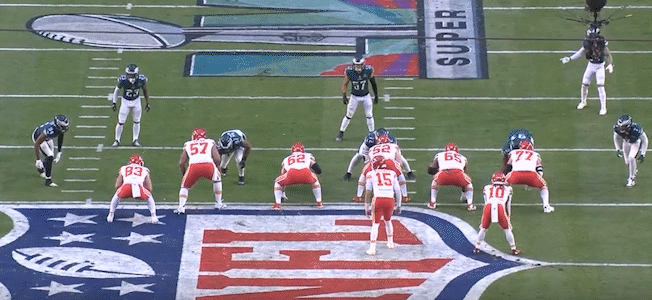The "mismatch;" The Chiefs offensive line dominated the Super Bowl
Looking at how Kansas City's OL was able to win against Philadelphia's vaunted defensive front, both in pass protection and on the ground.
It was the “mismatch” of the Super Bowl that would determine the results.
At least, that’s what many believed heading into the game. The Eagles’ deep and talented defensive line, which was historic in its ability to get after opposing quarterbacks and had come a long ways as a run defense, was considered to be the biggest threat to the Chiefs collecting their second Super Bowl in four years. Despite the work that Brett Veach had done to revamp Kansas City’s offensive line, and despite the success that Brown/Thuney/Humphrey/Smith/Wylie have had over the last two seasons, much of the analysis coming into the game focused on that “mismatch.”
You’ll notice I keep using quotes when I say the word mismatch. And there’s a reason for that.


The Chiefs offense ended up dominating its matchup against the Eagles defense, scoring on every drive of the second half and putting up 31 points on just 8 drives. That’s a rate of 3.87 points per drive, which would have led the league by a country mile (the top spot during the regular season was 2.76 points per drive, and of course it was the Chiefs).
There were a lot of reasons for Kansas City’s domination of the Eagles defense, from Mahomes’ brilliance to Andy Reid calling one of the best halves I’ve ever seen. But a primary reason was the front five of Kansas City not only holding their own, but actively winning a supposed mismatch against the Eagles’ defensive front. And it was apparent from the very first drive that they were going to give Philadelphia problems.
So just how well did the line play? To find out, as ever, we have to go to the film and take a look at each snap. And that’s exactly what I did, charting how often the line allowed Mahomes to come under pressure (it wasn’t much), along with how often the Chiefs were able to run the ball successfully and keep the Eagles off balance.
Let’s talk about dominating the line of scrimmage, and how that allowed Reid to call a very different game in the second half than anyone was expecting.




